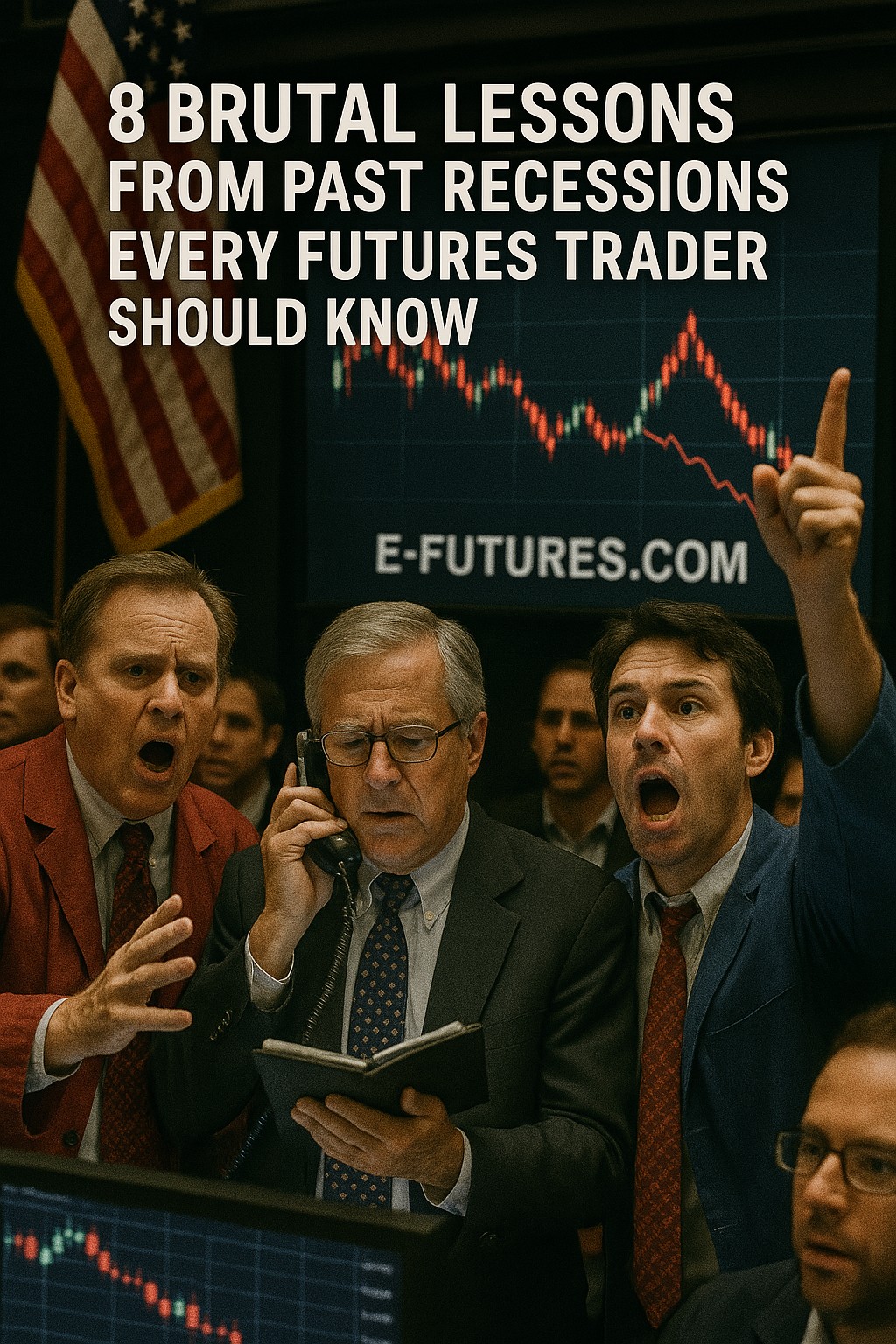In the dynamic and ever-evolving world of financial markets, traders are constantly searching for the best online futures broker to navigate the complex landscape of futures trading. With hundreds of platforms promising cutting-edge technology, low fees, and exceptional service, it can be challenging to distinguish true value from clever marketing. This article explores the defining traits of the best futures brokers, how E-Futures.com exemplifies these characteristics, and how traders can harness tools like the VIX index through expert broker support to capitalize on market volatility.
Common Characteristics Shared by the Best Online Futures Brokers
To be recognized as one of the best futures brokers, a platform must meet high standards across several critical dimensions. Traders evaluating a futures trading platform should look for the following:
Exceptional Customer Support
Customer support is more than just answering queries—it’s about providing meaningful, real-time assistance that can directly impact trading outcomes. The best online futures broker ensures that knowledgeable professionals are accessible, offering support via phone, chat, and email with minimal wait times.
Transparent and Competitive Fee Structure
The best futures brokers clearly disclose all commissions, fees, and associated costs upfront. They maintain competitive pricing without hidden charges that could erode a trader’s profit margin.
Diverse Range of Trading Platforms
Every trader has unique preferences and strategies. Thus, the best online futures broker provides access to multiple futures trading platform options, from beginner-friendly interfaces to highly customizable professional-grade software.
Educational Resources and Research Tools
New and seasoned traders alike benefit from robust educational resources. The best online futures broker offers guides on futures 101, webinars, platform tutorials, and market analysis tools to support informed decision-making.
Trust and Regulatory Standing
Regulatory compliance and a strong reputation are non-negotiable. Traders must trust that their broker operates with integrity, adhering to standards set by reputable industry bodies.
Advanced Charting and Analytical Tools
Access to powerful charting tools and technical indicators is essential. The best futures brokers offer platforms equipped with deep analytical capabilities for advanced futures trading strategies.
Product Diversity
A comprehensive selection of contracts and markets enables traders to diversify and adjust strategies based on market conditions. The best online futures broker gives access to indices, commodities, currencies, and more.
User-Friendly Experience
While professional-grade features are important, usability is key. The interface should be intuitive and responsive, ensuring that both novice and experienced traders can execute trades quickly and accurately.
How E-Futures.com Embodies the Traits of the Best Futures Brokers
E-Futures.com is a shining example of what it means to be the best online futures broker in today’s market. Its commitment to excellence is reflected in every aspect of its service offering.
Unmatched Customer Support by Industry Veterans
Unlike many brokers who hide behind automated systems, E-Futures.com stands out by offering direct access to real, seasoned professionals—no automated answering service. This human-first approach means traders can get immediate, accurate responses from experts with decades of experience. This level of service enhances decision-making and builds trust, particularly important in volatile market conditions.
Top-Rated Reputation on TrustPilot
Reputation is earned through consistent performance and customer satisfaction. E-Futures.com boasts numerous 5 out of 5-star ratings on TrustPilot, highlighting the firm’s unwavering commitment to trader success. These stellar reviews solidify its position as one of the best futures brokers available today.
Free Access to High-Performance Trading Platforms
Whether you’re a beginner or an institutional-level trader, E-Futures.com provides a wide selection of futures trading platform options—all free. These platforms are among the industry’s top performers, offering advanced charting, risk management tools, and real-time data to support effective futures trading.
Deep Dive: E-Futures.com Trading Platform Comparisons
E-Futures.com offers several high-caliber trading platforms, each tailored to specific trading needs:
- QST (Quick Screen Trading): Known for its lightning-fast execution and intuitive interface, QST caters to both scalpers and position traders. It includes advanced charting and built-in order flow analysis.
- Rithmic: Ideal for professional-level users requiring deep market data. With robust support for algorithmic trading and back-testing, it’s a go-to for quants and technical traders.
- Trade Navigator: Perfect for swing traders and those who value rich historical data, this platform offers powerful back-testing capabilities and strategy building.
- CTS T4: Offers unmatched stability and execution reliability, especially during high-volume periods. Traders love its no-frills layout and ultra-low latency.
By offering these distinct platforms at no cost, E-Futures.com ensures that traders can choose the futures trading platform that best aligns with their strategy and experience level.
Regulatory Integrity and Industry Recognition
Regulated by industry authorities and consistently recognized for ethical operations, E-Futures.com sets the standard for transparency and compliance. Its impeccable record further underscores its reliability as the best online futures broker.
Comprehensive Futures Education
E-Futures.com doesn’t just provide tools—it educates. With a complete suite of educational materials, including Futures 101 guides, platform tutorials, and market updates, the broker empowers traders to build knowledge alongside skills.
Hypothetical Trader Experiences with E-Futures.com
From Newbie to Confident Trader
Michael, a retail trader from Dallas, started with no experience. After diving into the Futures 101 resources, he quickly gained confidence. “What really made the difference was being able to call my broker and get a real human on the phone,” he says. Today, Michael actively trades E-mini contracts using the QST platform.
Institutional-Grade Trading for a Fraction of the Cost
Samantha, a former investment banker, uses Rithmic through E-Futures.com. “I used to pay thousands for platforms that didn’t offer what Rithmic gives me here—for free. It’s like having an institutional edge in my home office,” she notes.
Utilizing the VIX Index with the Help of an Online Futures Broker
The VIX index, also known as the “fear gauge,” is a vital tool in assessing market sentiment and forecasting volatility. Properly leveraging this index can give traders a substantial edge in their futures trading strategies.
What Is the VIX Index?
The VIX measures the market’s expectations of volatility based on S&P 500 options. A higher VIX typically signals fear or uncertainty, while a lower VIX indicates confidence and stability.
How Brokers Help Clients Use the VIX
The best online futures broker doesn’t just provide access to tools like the VIX—they teach traders how to use them. At E-Futures.com, brokers guide clients through:
- Interpreting VIX trends to anticipate market movements.
- Integrating VIX signals into broader futures trading strategies.
- Identifying hedging opportunities using VIX-related futures products.
- Real-time advisory support for responding to sudden changes in volatility.
Example Strategy: Hedging with VIX Futures
Consider a trader with a long position in E-mini S&P 500 futures. If the VIX begins rising, it may signal a coming downturn. A broker at E-Futures.com might suggest taking a small long position in VIX futures as a hedge, helping to mitigate potential losses.
Educational Sessions and Simulations
E-Futures.com also hosts educational webinars and one-on-one coaching sessions where clients can simulate trades using VIX data. This experiential learning enables traders to understand the VIX’s real-world implications, reinforcing their market instincts.
Why E-Futures.com Is Among the Best Futures Brokers Today
In a crowded market, E-Futures.com distinguishes itself through a rare combination of technology, experience, customer focus, and educational leadership. Here’s why it continues to rise as a premier choice for trading futures:
Broker Expertise Within Reach
Having a seasoned broker a phone call away can make all the difference. With E-Futures.com, there’s no need to navigate voicemail trees or wait for email responses—direct access means immediate answers and confident decisions.
All-Inclusive Platform Options at No Cost
From professional-level analytical tools to user-friendly mobile interfaces, E-Futures.com’s free platforms ensure that all traders have access to world-class resources. This democratization of technology is a key reason it’s considered the best futures broker by many.
Transparent and Trader-Centric Pricing
Hidden fees are a deal-breaker. E-Futures.com’s open and fair fee structure aligns with the trader’s best interests—another reason it ranks among the best online futures brokers.
Real Trust Backed by Real Reviews
The firm’s 5-star TrustPilot reviews are more than just a badge—they reflect the real experiences of satisfied clients. It’s one of the few futures brokers with a consistent track record of exceptional service.
Unparalleled Educational Depth
Whether you’re exploring futures 101 or seeking advanced insights, E-Futures.com provides resources that rival academic institutions. Knowledge is power, and this broker ensures you have both.
Strong Industry Reputation
Trust, integrity, and excellence are not just values—they’re the foundation of E-Futures.com. Recognized by regulators and respected by peers, this broker is a benchmark of what it means to be among the best online futures brokers.
Choosing the Best Online Futures Broker
In a world where milliseconds matter and information is king, the right futures trading platform and broker relationship can define a trader’s success. The best online futures broker is not merely a service provider—it’s a strategic partner.
E-Futures.com exemplifies everything a trader should seek: direct access to seasoned professionals, cutting-edge (and free) platforms, industry acclaim, and a client-first philosophy. Whether you’re just learning futures 101 or executing complex strategies, there’s no better ally in your trading journey.
For those looking to engage with the best futures broker, E-Futures.com is a choice grounded in experience, supported by trust, and powered by performance.
To open an account with E-Futures.com, please click here.
Ready to start trading futures? Call US 1(800)454-9572 – Int’l (310)859-9572email info@cannontrading.com and speak to one of our experienced, Series-3 licensed futures brokers and start your futures trading journey with E-Futures.com today.
Disclaimer – Trading Futures, Options on Futures, and retail off-exchange foreign currency transactions involves substantial risk of loss and is not suitable for all investors. Past performance is not indicative of future results. You should carefully consider whether trading is suitable for you in light of your circumstances, knowledge, and financial resources. You may lose all or more of your initial investment. Opinions, market data, and recommendations are subject to change at any time.
Important: Trading commodity futures and options involves a substantial risk of loss. The recommendations contained in this writing are of opinion only and do not guarantee any profits. This writing is for educational purposes. Past performances are not necessarily indicative of future results.
**This article has been generated with the help of AI Technology. It has been modified from the original draft for accuracy and compliance.
***@cannontrading on all socials








